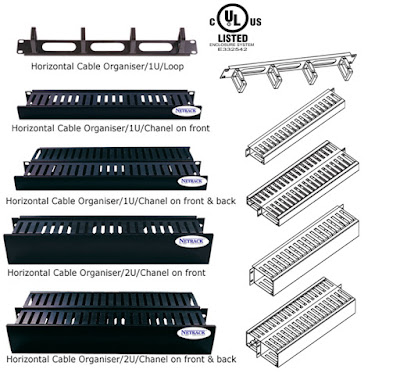Rack and cable solutions for an obstacle free network
A job in IT isn’t easy, and most likely your life revolves
around lot of cables and wires. The more efficient your cabling system can be,
the easier your work will become. Regardless of your need, for cable
management, to organize wires, to build a PC, or a desktop computer, we
create cable management solutions like heat shrink tubing; braided-sleeves,
wire loom, and zip ties. Network
cable management is important to keep your cables neat, bundled and
protected from the elements; you will need to invest in a few tools, like a cable
management rack. Start-up costs in business are always a battle, while
it’s possible to make wise decisions and eliminate a few extras from your budget;
one thing you can’t compromise is a reliable server and cable network and a
cool, secure room in which to keep it. In this business setting, it’s
impossible to do business without a sound network infrastructure. Server rooms
have turned into the nerve centres of any business. Despite its criticality, a server room doesn’t
necessarily have to bust the bank.
Cable management and racks are one of the
first things that should be taken care of in a server rack after mounting all
of your equipment. Your racks will not
only look disorganized, but it can make maintenance complicated and obstruct
airflow, if you don’t already have a good cable management strategy in place.
With that in mind, it is a good idea to explore effective cable management
strategies to help ensure all your cables are run properly to safe and
organized rack environment. A common mistake made by people when first using a
server rack is running their cables directly out of the hardware to either the
bottom or top of the rack itself. This may seem to be logical at first since
that is the most direct route to where the cables are leading, but over time it
will become a giant mess. As hardware and servers are added or removed, the
cables tend to get tangled and are a challenge to manage. Regardless of you
managing one server rack with one single piece of hardware in it, or you manage
a large scale data centre; you should choose to have colour coded cables. There
are a few different considerations of course like: Cable type: where you have
coded; one for CAT5 and another for fibre and so on. Cable purpose: different
colours for internal and external wires. And cable destination: colour coded
according to which floor of the office complex. Your solution lies in always running
cables out of the hardware, and directly over to the edge of the rack. While
the cables are at the edge, they will be bundled together using horizontal rack
organizers. These tools bundle all the cables together while they are flowing
either down into the floor (in a raised floor setting), or up into the ceiling
(in a setting where wires are run from the ceiling), or even just to another
piece of hardware.
Loose hanging or
lying-around cables will easily be caught on things, cause you to trip, tangled
up, and cause all sorts of chaos. Running the cables in such a way so that they
are kept bundled and tidy from beginning to end is a great way to ensure
cabling remains organized. This often means cutting it to the required length,
running the cable from the source to the destination, and then adding on the
proper cable end. Although it is a lot more work initially, it functions much
better for the long term.


Comments
Post a Comment